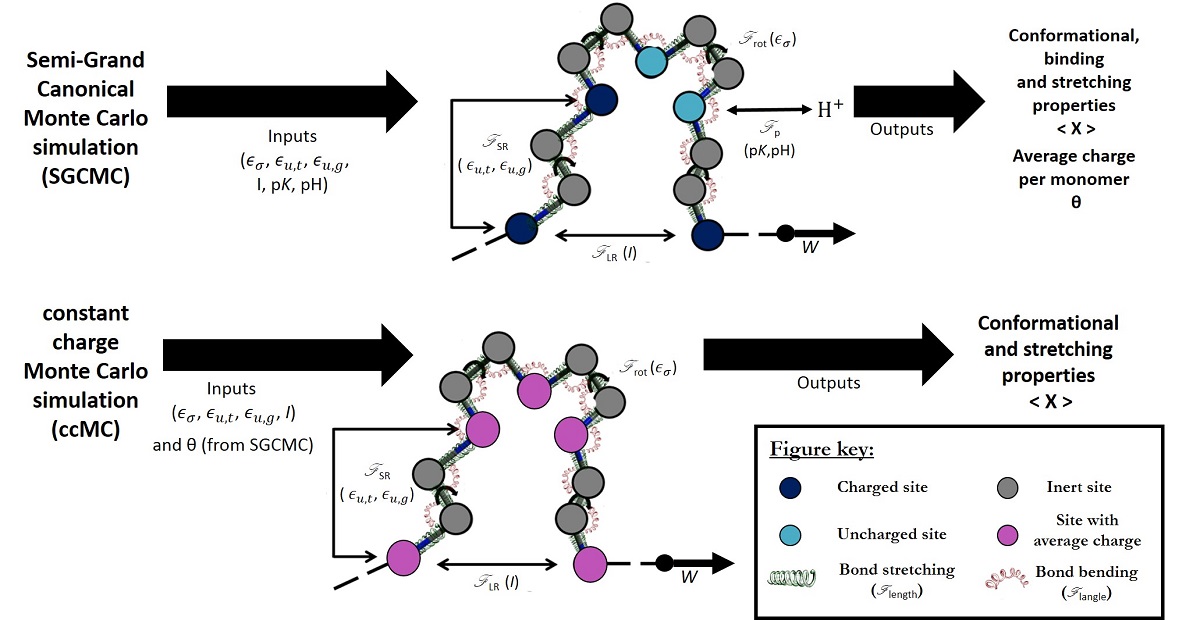This work addresses the role of charge regulation (CR) and the associated fluctuations in the conformational and mechanical properties of weak polyelectrolytes. Due to CR, changes in the pH-value modifies the average macromolecular charge and conformational equilibria. A second effect is that, for a given average charge per site, fluctuations can alter the intensity of the interactions by means of correlation between binding sites. We investigate both effects by means of Monte Carlo simulations at constant pH-value, so that the charge is a fluctuating quantity. Once the average charge per site is available, we turn off the fluctuations by assigning the same average charge to every site. A constant charge MC simulation is then performed. We make use of a model which accounts for the main fundamental aspects of a linear flexible polyelectrolyte i.e. proton binding, angle internal rotation, bond stretching and bending. Steric excluded volume and differentiated treatment for short-range and long-range interactions are also included in the model. It can be regarded as a kind of "minimal'' model in the sense that contains a minimum number of parameters but still preserving the atomistic detail. It is shown that, if fluctuations are activated, gauche state bond probabilities increase, and the persistence length decreases, so that the polymer becomes more folded. Macromolecular stretching is also analyzed in presence of CR (the charge depends on the applied force) and without CR (the charge is fixed to the value at zero force). The analysis of the low force scaling behavior concludes that Pincus exponent becomes pH-dependent. Both with and without CR, a transition from 1/2 at high pH-values (phantom chain) to 3/5 to low pH-values (Pincus regime), is observed. Finally, the intermediate force stretching regime is investigated. It is found that CR induces a moderate influence in the force-extension curves and persistence length (which in this force regime becomes force-dependent). It is thus concluded that the effect of CR on the stretching curves is mainly due to changes in the average charge at zero force. It is also found that, for the cases studied, the effect of steric excluded volume is almost irrelevant compared to electrostatic interactions.

